Are you tired of looking at that old, worn-out fence in your backyard? Maybe it’s time for a change. In this article, we’re going to discuss how to remove an old fence and give your property a fresh new look. But before we dive into the details, let me assure you that we’ve got you covered. We’ll go through step-by-step instructions and provide you with all the information you need to know. So, if you’re ready to transform your outdoor space, keep reading to learn more!
First things first, removing an old fence might seem like a daunting task, but with the right tools and knowledge, it can be a breeze. From gathering the necessary tools to dismantling the fence piece by piece, we’ll guide you through the process. We’ll also cover safety precautions, disposal options for the old fence materials, and tips for minimizing damage to your yard during the demolition. By the end of this article, you’ll have all the information you need to remove your old fence and make room for something new and beautiful. So, let’s get started and bring down that old fencing! Stay tuned for valuable insights and helpful tips in the upcoming sections.
Fence Demolition: How to Remove an Old Fence
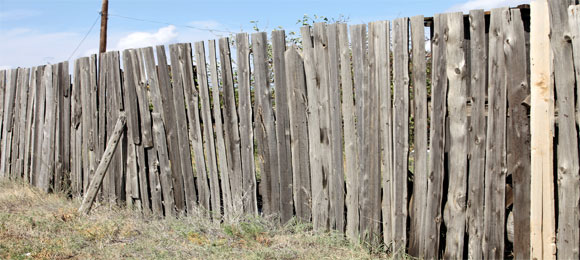
Types of Fences
When considering fence demolition, it’s important to first understand the different types of fences. This knowledge will help you determine the specific steps to take for removing your particular fence. Here are the most common types of fences:
Wooden Fences
Wooden fences are popular for their classic and natural look. They can add warmth and character to any property. However, over time, wooden fences can deteriorate due to weather conditions and pests.
Chain Link Fences
Chain link fences are known for their durability and security. They are commonly used in commercial and industrial settings. Removing a chain link fence requires a different approach compared to other types of fences.
Vinyl Fences
Vinyl fences are low-maintenance and resistant to rot, insect damage, and fading. They are a popular choice for homeowners who want a fence that requires minimal upkeep. Removing vinyl fences can be a more straightforward process compared to other types of fences.
Iron Fences
Iron fences are known for their elegance and durability. They can provide both security and aesthetic appeal to any property. Removing an iron fence may require specialized tools and techniques due to its heavy and sturdy construction.
Factors to Consider Before Removing a Fence
Before jumping into the fence demolition process, it’s essential to consider several factors to ensure a smooth and successful removal. Here are the key factors to consider:
Assessing the Condition of the Fence
Evaluate the current condition of your fence. Determine if it has significant damage, rot, or if it’s in good shape overall. This assessment will help you decide whether to repair or replace the fence instead of removing it.
Checking Local Regulations and Permits
Check with your local authorities to understand any regulations or permits required for fence removal. Some areas may have restrictions on fence types, heights, and removal processes. Compliance with local regulations will prevent any legal issues down the line.
Analyzing the Cost of Removal
Consider the costs associated with fence removal. Assess the time, effort, and expenses involved in the process. Decide whether you want to undertake the removal as a DIY project or hire professional help based on your budget and available resources.
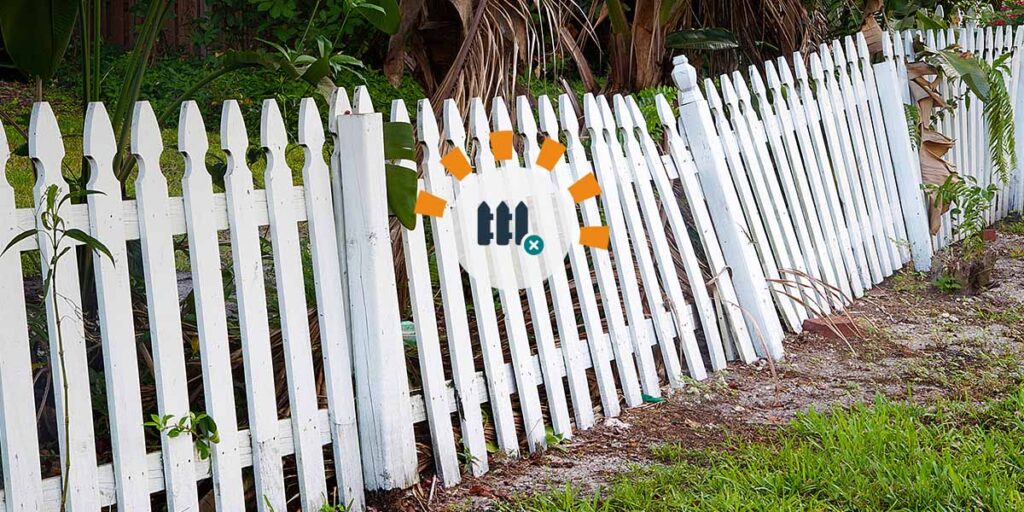
Tools and Materials for Fence Removal
To successfully remove a fence, you’ll need specific tools and materials. Here is a list of what you’ll likely require:
Safety Equipment
Ensure your safety during fence demolition by wearing the appropriate gear. This includes gloves, safety goggles, steel-toed boots, and a dust mask. Protection is crucial to avoid injuries and exposure to harmful substances.
Hand Tools
Various hand tools will aid in the removal process. These may include a claw hammer, pry bar, screwdriver, wire cutters, and pliers. These tools will help you disassemble the fence and remove any nails, screws, or other fasteners.
Power Tools
Depending on the type of fence, you may need power tools such as a reciprocating saw, circular saw, or angle grinder. Power tools can speed up the removal process and make it easier to handle more substantial fence materials.
Dumpster or Recycling Bin
Arrange for a dumpster or recycling bin to dispose of the fence materials properly. This will help keep your work area clean and organized during the removal process.
Step-by-Step Guide to Fence Demolition
To ensure a successful fence removal, follow this step-by-step guide:
Preparing the Work Area
Clear the area around the fence, removing any obstructions or obstacles. Create a safe and accessible space to work in.
Removing Nails and Screws
Use hand tools such as a claw hammer, pry bar, or screwdriver to remove any nails, screws, or other fasteners attaching the fence components together. Take caution to prevent injury during this process.
Disassembling Panels
Gently dismantle the fence panels by removing the connecting pieces. This step may involve undoing screws, cutting wire ties, or unhooking sections to separate the panels.
Digging Out Posts
If the fence has posts set in the ground, dig them out using a shovel or post hole digger. Start from the top and work your way down, removing any dirt or concrete around the posts.
Removing Concrete Footings
In some cases, fence posts may have concrete footings. Use a power tool such as an angle grinder or reciprocating saw to cut through the concrete and free the posts.
Cleaning the Site
Once the fence components are removed, clean the site by removing any leftover debris, nails, or screws. Ensure the area is safe and clear for other projects or a new fence installation.
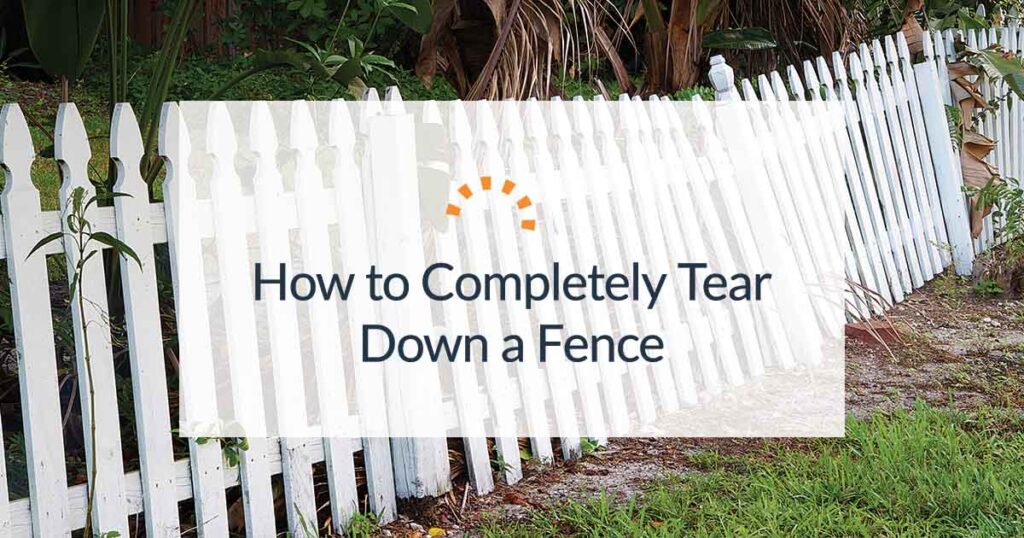
Alternative Methods of Fence Removal
If you prefer not to tackle fence removal yourself or have a particularly challenging fence to remove, consider these alternative methods:
Hiring a Professional Demolition Service
Professional demolition services specialize in fence removal. They have the expertise, experience, and tools needed to efficiently and safely remove any type of fence. While this option may incur additional costs, it saves you time and effort.
Using a Skid Steer or Excavator
For larger fences or heavy-duty removal, using machinery such as a skid steer or excavator can make the process quicker and more manageable. This option is ideal for fences with heavy materials or extensive fence lines.
Burning or Recycling the Old Fence
If the fence materials are suitable for burning, you may choose to do so, following local regulations and safety protocols. Alternatively, recycle the old fence materials if possible. Recycling helps reduce waste and promotes sustainability.
Tips for a Successful Fence Demolition
Follow these tips to ensure a successful and efficient fence demolition:
Work with a Partner for Safety
Having a partner can make the process safer and more manageable. They can assist in lifting heavy materials, provide a second pair of eyes for safety precautions, and help with the overall workflow.
Use Proper Lifting Techniques
When handling heavy fence materials, use proper lifting techniques to avoid strain or injury. Bend at the knees, keep your back straight, and lift with your legs. If an object is too heavy, ask for assistance.
Dispose of Materials Responsibly
Dispose of the fence materials responsibly by recycling or disposing of them in compliance with local regulations. Avoid leaving old fence materials on public property or in areas where they may cause hazards.
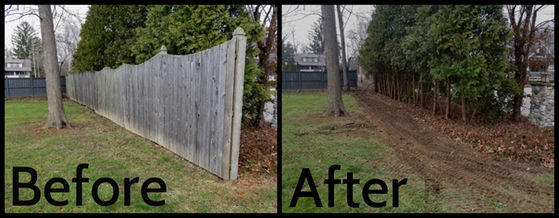
Reuse and Recycling of Fence Materials
Instead of disposing of fence materials, consider reusing or recycling them in an environmentally friendly way:
Repurposing Old Fence Wood
Old fence wood can be repurposed for various DIY projects. Consider using the wood for garden beds, furniture, or other creative endeavors. This not only reduces waste but also gives the wood a new life.
Selling or Donating Fence Materials
If your fence materials are still in good condition, consider selling or donating them. Websites or forums dedicated to home improvement projects and DIY enthusiasts may have interested buyers or individuals in need of fence materials.
Common Challenges and Troubleshooting
During fence demolition, you may encounter certain challenges or issues. Here are some common ones and how to troubleshoot them:
Difficult Soil Conditions
If the soil is hard or rocky, digging out fence posts may be challenging. Use a post hole digger or a manual or powered auger to break up the soil and make the removal process easier.
Rusted or Stuck Fasteners
Older fences may have rusted or stuck fasteners that are difficult to remove. Apply penetrating oil to loosen the fasteners and use appropriate tools to carefully extract them. In some cases, you may need to cut through the fasteners or replace them entirely.
Obstacles Around the Fence
Sometimes, there may be obstacles near or around the fence that obstruct the removal process. Clear any plants, structures, or other objects before starting the demolition. Use caution and adjust your approach as necessary to overcome these obstacles.
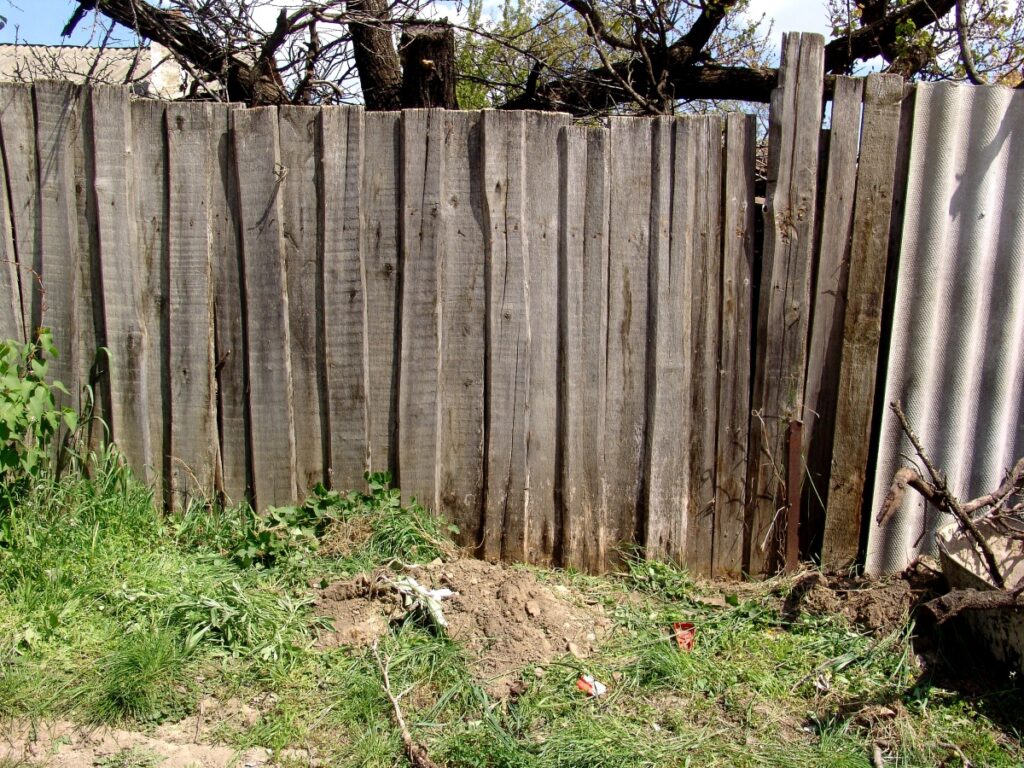
Repairing or Replacing a Fence
Removing a fence provides an opportunity to assess whether repair or replacement is necessary. Consider the following when making this decision:
Assessing the Need for Repair or Replacement
Evaluate the overall condition of the fence and determine if repairs can address any issues. If the damage is extensive or repairs are impractical, replacement may be the better option.
Choosing a New Fence Design
If you decide to replace the fence, consider the design, style, and material that will best suit your needs and preferences. Research different fence options to find one that aligns with your goals and enhances your property’s appearance.
Hiring a Fence Contractor
If repairing or replacing a fence seems overwhelming or outside your skill set, hiring a professional fence contractor is the best solution. They can handle the entire process, from the removal of the old fence to the installation of the new one.
Maintaining a New Fence
Once you have successfully removed an old fence or installed a new one, proper maintenance is essential for longevity. Here are some maintenance tips and practices:
Cleaning and Staining
Regularly clean the fence to remove debris, dirt, and mildew. Apply a high-quality stain or sealant to protect the wood from rot, moisture, and other environmental damage.
Inspecting for Damage
Periodically inspect the fence for any signs of damage, including loose boards, cracked panels, or insect infestations. Promptly address any issues to prevent further deterioration.
Dealing with Weathering and Pests
Take preventative measures to protect your fence from weathering and pests. Trim vegetation near the fence line to prevent moisture buildup and potential damage. Address any pest infestations promptly to avoid further damage to the fence.
Pros and Cons of DIY Fence Removal
Deciding whether to remove a fence yourself or hire professionals is a personal choice. Consider these pros and cons:
Cost Savings
Removing a fence yourself can save money on professional service fees. This is a great option for those on a tight budget.
Time and Effort
Fence removal requires physical labor and can be time-consuming, especially for larger or more complex fences. Calculate the time and effort you’re willing to invest before making a decision.
Potential Risks and Mistakes
DIY fence removal comes with potential risks, including injuries and mistakes. If you’re inexperienced or unsure about the process, it may be safer to hire professionals who have the necessary skills and expertise.
Safety Precautions during Fence Demolition
Observe proper safety precautions to ensure your well-being during fence removal:
Wearing Protective Gear
Always wear protective gear, including gloves, safety goggles, steel-toed boots, and a dust mask. This protective equipment will safeguard you from potential injuries and exposure to harmful substances.
Avoiding Electrical Hazards
Exercise caution when dealing with fences that have electrical components, such as security systems. Turn off the power supply and follow proper procedures to remove or disconnect any electrical wiring.
Securing the Work Area
Keep the work area secure and limit access to prevent accidents or injuries. Use barriers, warning signs, or tape to indicate that fence removal is in progress.
Environmental Impact of Fence Demolition
Being mindful of the environment during fence demolition is crucial. Consider the following practices:
Sustainable Demolition Practices
Minimize waste by salvaging and repurposing materials whenever possible. Properly dispose of any non-recyclable waste and hazardous materials in an environmentally friendly manner.
Reducing Waste and Carbon Footprint
Recycle materials, such as wooden fence components or metal pieces, to reduce waste and lower your carbon footprint. Opt for environmentally friendly disposal methods to minimize the impact on the environment.
Conclusion
Fence demolition requires careful planning, the right tools, and a bit of elbow grease. By following the outlined steps and taking necessary precautions, you can successfully remove an old fence and prepare the area for a new one. Whether you choose to tackle the project yourself or hire professionals, ensure that the fence removal process is executed safely and responsibly. Remember to consider the environmental impact of the demolition and explore opportunities for reusing or recycling old fence materials. With proper planning and execution, fence removal can be a smooth and rewarding endeavor.